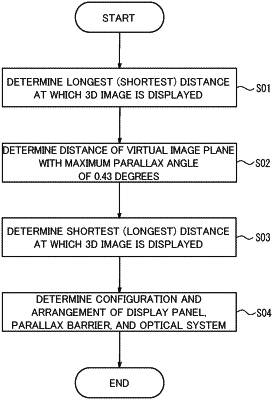| CPC G02B 27/0101 (2013.01) [B60K 35/00 (2013.01); G02B 30/30 (2020.01); G02B 30/31 (2020.01); G02B 30/32 (2020.01); H04N 13/344 (2018.05); H04N 13/371 (2018.05); H04N 13/383 (2018.05); G02B 2027/0123 (2013.01); G02B 2027/0141 (2013.01); G02B 2027/0183 (2013.01); H04N 13/315 (2018.05); H04N 13/363 (2018.05)] | 7 Claims |

|
1. A head-up display, comprising:
a display panel configured to display an image;
an optical element configured to define a propagation direction of image light emitted from the display panel;
an optical system configured to propagate the image light having a propagation direction defined by the optical element, toward eyes of a user, and project a virtual image of the image onto a virtual image plane which is positioned at a distance of 3.5 m to 7.5 m from the eyes of the user; and
a processor configured to cause the display panel to display the image, the image comprising a first image and a second image which have a parallax with each other,
the optical element being configured to propagate the first image displayed on the display panel, toward a first eye of the user, and to propagate the second image displayed on the display panel, toward a second eye of the user, and
the processor being configured to determine a maximum convergence angle greater by 0.43 degrees than a convergence angle for viewing a point on the virtual image plane, determine a minimum convergence angle less by 0.43 degrees than the convergence angle for viewing a point on the virtual image plane, and control the display panel such that the first image and the second image are projected as a three-dimensional image in a field of view of the user, and a convergence angle at which the user views a point on the three-dimensional image is equal to or less than the maximum convergence angle and is equal to or greater than the minimum convergence angle.
|